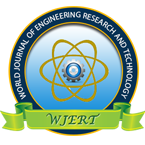| All | Since 2020 | |
| Citation | 172 | 110 |
| h-index | 7 | 5 |
| i10-index | 1 | 0 |
WJERT Citation 
Login
News & Updation
Abstract
TOWARDS ENHANCED PEROVSKITE SOLAR CELLS: A REVIEW OF MATERIALS, FABRICATION ENVIRONMENTS, AND TECHNIQUES
Mohammed Muye, Haruna*, Stephen U. Egarievwe and Seong W. Lee
ABSTRACT
One of the renewable energy sources, solar energy, is seen to be an effective substitute for fossil fuels, which have exacerbated climate change and had detrimental effects on the environment. The two methods for harvesting solar energy are solar photovoltaic (SPV) and concentrated solar power plants (CSP), with SPV being the most popular. Perovskite solar cells (PSCs) and silicon-based solar cells (SBCs) have demonstrated notable power conversion efficiency (PCE) within the SPV family. PSCs have been the subject of much research over the past 20 years, and because of their high absorption coefficient, effective carrier mobility, direct bandgap, long charge diffusion length,low cost, and flexible fabrication, they have shown great promise as a photovoltaic technology. These features make PSC a prospective candidate for replacing silicon in SPVs. By 2021, PSC achieved an encouraging PCE of over 25%. This review discusses PSCs commonly used and alternative materials, fabrication environments, and techniques. The influence of fabrication environments on the cell layers of thin films, and studies on the cell materials and fabrication techniques were also discussed.
[Full Text Article] [Download Certificate]
